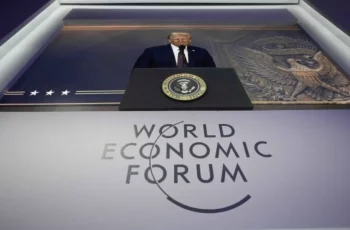
Donald Trump has long established himself as a man of his word. No matter how extravagant his statement may seem, no matter how destructive his policy may be, if he has announced that measures will be taken, then this is to be expected. Canada and Mexico, accused by the Republican of ineffectively combating crime and drug trafficking, which, according to him, penetrate into the United States from these countries, could not prevent the imposition of duties on imports to the United States. Even the USMCA Agreement, which replaced NAFTA and was the pride of the first term of the Trump presidency, could not protect against the impending storm. Trump is not afraid to act in the spirit of realpolitik in order to achieve what he wants. And let it be 25% duties, potentially destroying the economies of neighboring countries, but he will get what he wants-no matter what the cost. However, the restrictions lasted only two days and were suspended, but not lifted, after Mexico and Canada promised to strengthen border controls.
North America was first but not last
The talk of impending trade wars that have filled the media space in recent months is increasingly becoming a reality. Trump will turn the American economy into his most formidable weapon and will use it against everyone: enemies – be it China or anyone else – and friends, including NATO allies. The American president has already threatened Europe with tariffs, although the latter’s economy is clearly not doing well. Of course, the sanctions are senseless and equally harmful to Europe and Russia, and the high cost of energy resources in conditions of the inaccessibility of the Russian market is pushing inflation further and further. However, the United States is not afraid to take advantage of this by “pushing” its shale oil and gas. During the election campaign, Donald Trump promised to give carte blanche to the oil business, which actively supported him. As we remember, Trump is a man of his word. Moreover, the Europeans will pay for these resources.
However, the actual figures differ from the stated figures. The US trade deficit with Europe is not 350 billion euros, but 157 billion, which is equivalent to 16% of the country’s total trade deficit. If we take into account the US surplus in trade in services with the EU, the difference is reduced to 52 billion euros (7% of the total deficit). This imbalance in trade between the US and the EU has persisted since 1970 and is the result of long-term interdependent economic ties.
Trump has “all the trumps”
The recent move by Saudi Arabia, which called into question the dominance of the dollar in the hydrocarbon trade, as well as the desire of the BRICS countries to reduce their dependence on the American currency, are forcing the US president to reconsider his economic strategy. On the other hand, Donald Trump is well aware that Europe is in a difficult position.
In the eastern direction, the threat from Russia makes European countries even more dependent on the support of the transatlantic alliance. Suffice it to say that 80% of the weapons that the EU supplied to Ukraine were manufactured in the United States. In the western direction, the economic stability of Europe, especially Germany, largely depends on access to the American market, in particular for the export of premium segment cars.
What will Trump’s protectionism towards Europe lead to?
According to estimates by the European Commission, the introduction of a universal customs tariff of 10% could lead to a 1% decrease in EU GDP from 2025 (for Germany, this figure could reach 1.6%) and provoke a 30% reduction in exports in industries such as machine tools, vehicles, pharmaceutical and chemical products, which In 2023, they accounted for two thirds of EU exports to the United States.
France, despite the negative trade balance with the United States, still remembers the 25% “tax” imposed by the Trump administration on wines and spirits in 2019-2021. Similar duties were imposed on European steel (+25%), but this did not stop the growth of the US trade deficit with the EU, which increased by 33% during Trump’s first term (from 2016 to 2020).
On the other hand, a large-scale tariff increase carries inflationary risks for the American economy. According to the Yale University Budget Laboratory, such measures can cost American households an additional $1,000 to $1,200 per year due to reduced purchasing power.
What is European view?
Now we can only wait to see what Europe’s reaction will be, if it comes at all. Last Monday, the leaders of the EU countries gathered in Brussels for an “informal discussion” on defense issues, a particularly sensitive topic in the context of transatlantic relations, given Donald Trump’s criticism of European allies for insufficient budget contributions to NATO.
France is betting on the development of the European military-industrial complex, but a number of member countries, including Germany, warn against excluding American manufacturers, fearing a possible negative reaction from Trump. “It would be a mistake to think that Europe is capable of ensuring its security alone; we need to continue to cooperate with the United States within the framework of NATO,” Belgian Prime Minister Bart de Wever said on Monday.
The meeting at the Egmont Palace showed differences among European leaders regarding the approach to the US trade strategy. Finnish Prime Minister Petteri Orpo called for negotiations with Trump, while Luxembourg Prime Minister Luc Frieden proposed retaliatory duties. German Chancellor Olaf Scholz admitted the possibility of tax measures, while insisting on the need for dialogue. In turn, Polish Prime Minister Donald Tusk warned against escalation and noted that an attempt at a trade war would be a strategic mistake.
Whatever the EU’s new approach to trade with the United States, one thing is clear – Europe has long been a bargaining chip in the big game of the United States. If the price of the new “golden age of the United States” is the destruction of European stability – no matter how flimsy it may be – then Trump will easily pay this price.










Comments